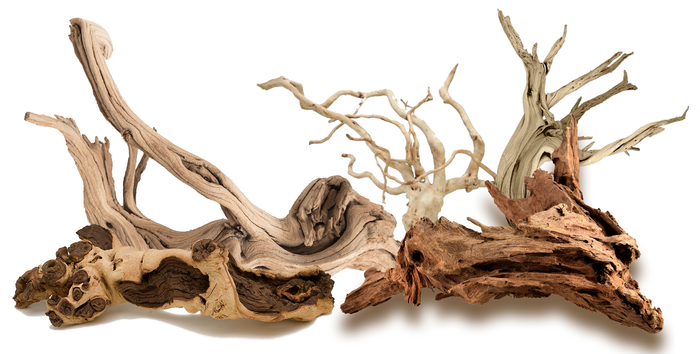Driftwood in Aquariums - What You Should Know

A favorite aquascaping material, driftwood has been used by aquarists since the dawn of fish keeping to create beautiful and natural aquascapes within our aquariums. There are a wide variety of woods available, all with unique shapes, colors and textures, making it easy to find a type of driftwood to match your taste. Driftwood, despite being a wonderful decor option, does have a few properties you will want to consider before plunging a choice piece in your aquarium.

Tannins
Driftwood, like most plant material, contains tannins. So unless you are trying to achieve a blackwater biotope, you will probably want to mitigate as much of the tannins as you can. Pre-soaking driftwood in hot water for a few hours will help remove a lot of tannins before you put the wood into your aquarium. You can repeat the process several times until the wood has lost the majority of its tannins. If you still end up with some yellow coloration in your aquarium even after you've pre-soaked your wood, a small amount of carbon in your filter can remove the coloration.
Wood Floats
Until it becomes waterlogged, most driftwood will want to float, although some types of wood are denser than others and may naturally want to sink. When aquascaping with wood, it can be beneficial to mount the wood to a piece of slate, or other rock, to help keep it in place while it slowly absorbs water and naturally weighs itself down. Alternatively, pre-soaking the wood until it sinks is a great way to make sure the aquascape you worked hard to achieve does not float away as you fill the aquarium!
Breaking Down
Wood is organic and that means it will break down over time. How quickly it breaks down will depend on a number of factors, but on average, most driftwood will begin to show signs of deterioration as early as 2 years after being submerged and may need replacing after roughly 5 years. As the wood begins to deteriorate, the outside of the wood will start to feel soft and fall away in the form of fluffy, muddy debris. This debris can build up on the substrate of the aquarium and resemble piles of fish waste. It will often be sucked up by the filter and can clog mechanical media with a dark brown mud. If the rate of deterioration is making aquarium and filter maintenance difficult, it is likely time to replace the driftwood in the tank. This might seem unfortunate, but it gives you the opportunity to re-scape your aquarium and try something new, be it another driftwood showpiece, or something more permanent like dragon stone!
With these considerations in mind, working with driftwood to create beautiful aquascapes and biotopes can be a fun and rewarding process!
By the way, if you're looking for a way to automate your aquarium, you should check out the KAI Smart Controller aquarium kits!

